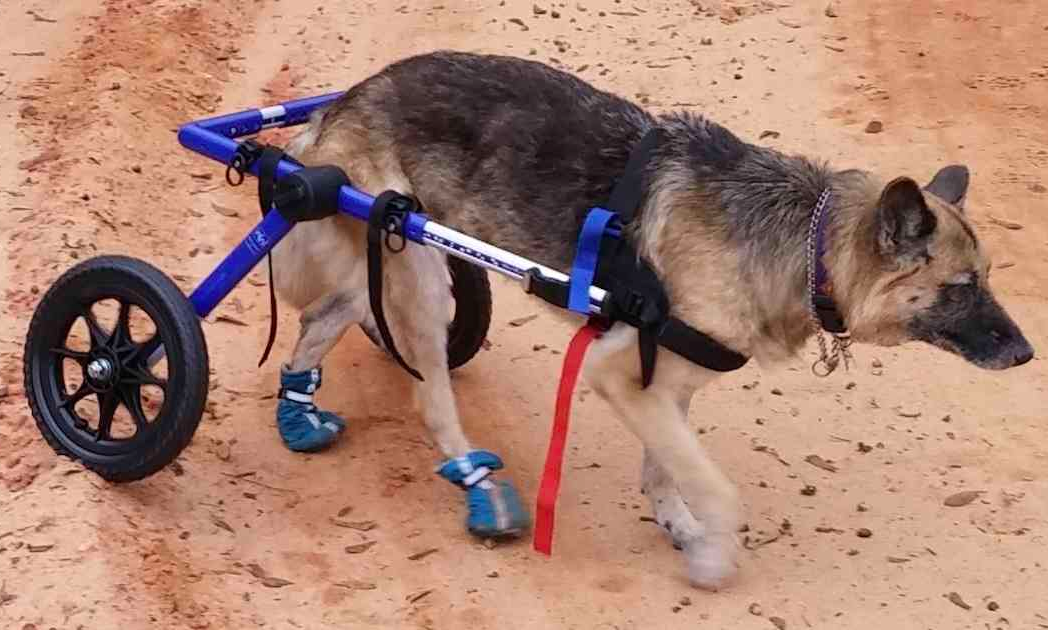Contents
Before we directly drop down to Mitochondrial Myopathy in German Shepherd Dog, let us talk a bit about what is “Mitochondria” and what is “Myopathy” separably.
Mitochondria are the cellular structures in an organism in which energy is produced from the oxidation of fuels such as glucose and fat in the form of heat and mechanism i.e. working ability. Researchers have discovered some biochemical defects in the mitochondria. Some of the known mitochondrial diseases in dogs and other organisms occur due to abnormalities in the mitochondrial DNA.
Myopathy is a neuromuscular disorder that makes the muscle fibers dysfunctional due to one or more reasons. This consequently results in the weakening of muscles, leading to cramping and stiffness of muscles, and muscular spasms. Myopathy can be of different types like mitochondrial myopathies, congenital myopathies, muscular dystrophies, etc.
Inherited disorders of carnitine metabolism in dogs are among the most important causes of mitochondrial myopathy in German Shepherd Dogs and other dog breeds. The mitochondrial disorders in German Shepherds occur due to gene mutations – either nuclear genomes or mutations in mitochondrial DNA. The mutations in mitochondrial DNA in German Shepherd Dogs and any other canine breeds get transmitted by maternal inheritance. Putting this in simple, Mitochondrial myopathies in the GSD breed and in any other canine breeds are caused by genetic mutations, which directly affect the functioning of the electron transport chain (ETC).
Although not in very large numbers, a few cases of Mitochondrial Myopathy have been found in German Shepherd Dogs. The histochemical and ultrastructural findings in the case of mitochondrial myopathy in the German Shepherd Dog breed have been reported quite infrequently by vets.
Mitochondrial Myopathy in a German Shepherd Dog

A male German Shepherd Dog of around 36 weeks old had been referred to the Department of Veterinary Clinical Science–Surgery Section, University of Naples. The dog had a history of intolerance to exercise, reluctance to move, and spontaneous pain. The symptoms had started showing just a month before the dog was referred to the Department of Veterinary Clinical Science–Surgery Section, University of Naples. The condition had been progressively increasing, showing signs of systemic muscle atrophy, mainly in limb and truncal muscles, accompanied by muscular pain, stiffness in gait, and thoracolumbar kyphosis (spinal deformity). The German Shepherd with such a clinical symptom was exhibiting bunny hopping in hind legs while trying to move fast.
Since the orthopedic and neurologic examinations of the German Shepherd Dog turned out to be unremarkable, his blood samples had been collected for hematologic and serologic examination. The report of hematologic examination did not show any abnormalities, while on the other hand, the biochemistry revealed an increase in the level of creatine kinase at 37 C (181 U/liter), lactate dehydrogenase (510 U/liter), and aspartate aminotransferase (123.6 U/liter). Moreover, radiographs of the stifle region and coxofemoral had been taken. However, no abnormalities could be found in the radiograph report. Muscle biopsies were also taken from the femoral biceps muscle for histopathologic examination.
Organs affected in case of Mitochondrial Myopathy
In mitochondrial disorders in dogs, the worst affected organs are the ones that mainly depend on oxidative metabolism (chemical reactions involving oxygen). However, these organs include the brain, skeleton, heart muscles, sensory organs, and kidney. The existence of the mildest degree of mitochondrial myopathy in GSD, like any other canine breed, will cause mild weakness of muscles, which would be most noticed in the arms. There will also be exercise intolerance.
Signs of Mitochondrial Myopathy
German Shepherd Dog – like any other dogs affected with mitochondrial myopathies has severe exercise intolerance that can be consistently demonstrated with even mild exercise. They have stiff, stilted gait, bunny-hopping in the pelvic limbs, reluctance to move, and spontaneous pain. Laboratory tests reveal exercise-induced metabolic acidosis.
Diagnosis of Mitochondrial Myopathy
Diagnosis of mitochondrial myopathies in German Shepherd dogs often involves multifaceted approaches. It requires a demonstration of post-exercise plasma lactate and pyruvate concentrations. Light and electron microscopic evaluation of the mitochondria of the dog within muscle biopsy sections are also used to diagnose mitochondrial myopathies in canine breeds. Precise characterization is dependent on specialized biochemical tests and molecular studies.
Mitochondrial Myopathy Treatments
Treatments of Mitochondrial Myopathy in GSD or other canine breeds range from treating the symptoms to very specific cause-targeting treatments. The common treatments include the administration of antioxidants – especially vitamin E, alternative energy sources – creatine monohydrate, lactate reduction – dichloroacetate and no to be forgettable exercise training. Exposing the patients to the correct type and degree of exercise is a particularly very important modality in treating Mitochondrial Myopathy in German Shepherd Dogs and other dog breeds.

 Nuclear Sclerosis in German Shepherds: Symptoms, Causes, and Treatments
Nuclear Sclerosis in German Shepherds: Symptoms, Causes, and Treatments